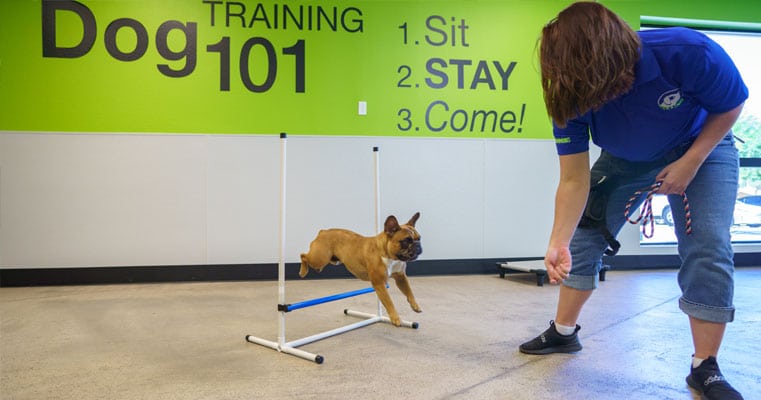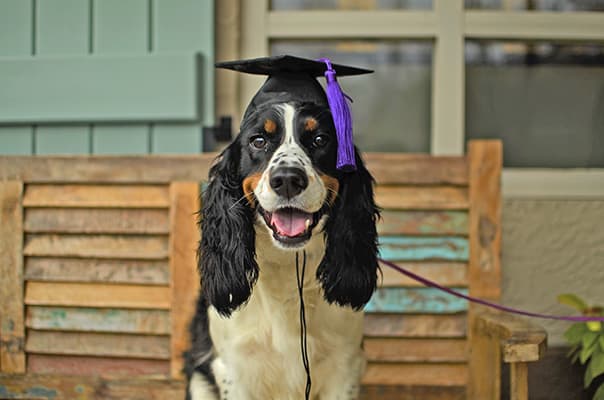How to Master Dog Training and Build a Stronger Bond with Your Pup
How to Master Dog Training and Build a Stronger Bond with Your Pup
Blog Article
Beginner's Overview to Successful Canine Training in the house
Effectively educating a dog at home requires a nuanced understanding of canine behavior and efficient communication strategies. Developing clear training objectives, making use of premium incentives, and maintaining consistency across household participants are vital aspects. Incorporating training right into everyday routines can improve both involvement and retention.
Comprehending Dog Habits
Comprehending dog habits is crucial for efficient training and fostering a harmonious connection between human beings and their canine friends. Dogs interact mainly via body language, vocalizations, and faces, making it crucial for owners to analyze these signals properly. Identifying actions such as tail wagging, growling, or shrinking can supply insights right into a dog's emotional state and intentions.

Common behavioral concerns, such as aggression, anxiety, or extreme barking, typically come from misunderstandings or unmet requirements. Observing and dealing with these issues without delay can avoid acceleration and make sure a positive training experience. By fostering a deep understanding of pet habits, owners can customize their training approaches to match their canine companions, eventually bring about a happy and well-behaved pet dog.
Essential Educating Tools
A well-appointed training area can substantially improve the effectiveness of pet training in your home. Crucial training devices make certain that both the trainer and the pet dog can take part in effective sessions that promote discovering and bonding.

Buying a sturdy leash and a comfy, well-fitting collar or harness is vital for safety and security and control. These tools help establish boundaries and ensure the pet dog stays safe and secure during training. Additionally, a designated training location, without disturbances, help concentration for both the pet and the fitness instructor.
Educating aids such as training pads, cones, or agility devices can additionally boost the experience by introducing variety and obstacles. Having a notebook or digital application for tracking progression can be very useful, allowing you to keep in mind successes and locations for renovation. Making use of these crucial devices will create a favorable training environment and lay the structure for efficient understanding.
Developing a Training Routine
Developing a constant training routine is necessary for reliable canine training in your home. A well-structured routine not just helps in strengthening preferred actions but additionally offers your pet dog with a feeling of safety and predictability. To develop a reliable training routine, begin by determining specific training goals, such as standard commands, leash strolling, or house-breaking.
Select an assigned time each day for training sessions, ideally when your pet is responsive and alert. Sessions must be short, approximately 5 to 15 mins, to preserve emphasis and protect against exhaustion. Uniformity in timing and setting will certainly improve your pet dog's knowing experience.
Include training right into day-to-day tasks to strengthen go to my blog skills. Technique commands throughout strolls or mealtime, which integrates learning right into all-natural routines. In addition, remain versatile and change the routine as necessary, fitting your pet dog's energy degrees and state of mind.
Favorable Support Techniques
Favorable reinforcement methods are basic to effective pet training, advertising desired behaviors through benefits instead of punishment. This method makes use of positive stimulations, such as deals with, appreciation, or play, to motivate pet dogs to duplicate certain actions. The cornerstone of this method is timing; incentives need to be offered immediately complying with the wanted actions to develop a clear association.
When applying favorable reinforcement, it is essential to pick rewards that are motivating for your pet. High-value deals with, such as little items of chicken or cheese, can be especially effective throughout training sessions. In addition, differing the incentives can preserve your canine's interest and enthusiasm.
Start with straightforward commands, like "sit" or "stay," and gradually progress to extra intricate jobs. Consistency is crucial; make sure that all member of the family use the very same commands and reward systems to prevent confusion.
Additionally, it is important to stay client and prevent aggravation. Pets, like human beings, find out at their own rate. By cultivating a supportive training setting via favorable reinforcement, you can enhance your pet dog's understanding experience while reinforcing the bond between you and your hairy friend, laying the groundwork for successful training end results.
Common Training Challenges
While training a dog in the house can be a gratifying experience, it typically includes a set of common challenges that can examine both persistence and uniformity. One widespread problem is distraction. Dogs may end up being quickly averted by noises, motions, or perhaps scents in their environment, making it hard to keep their emphasis during training sessions.
Another challenge is incongruity in commands and reinforcement. If relative make use of different cues or incentives, it can confuse the canine and prevent progression. Developing a unified method is necessary for effective interaction.
In addition, canines can experience disappointment or stress, specifically if they do not understand what is expected of them. This can bring about unfavorable behaviors, such as chewing or barking.
Finally, the timing of reinforcement is crucial (Dog training). Postponed incentives can diminish the effectiveness of positive reinforcement, as pet dogs may stop working to link the actions with the incentive
Conquering these difficulties needs commitment, clear communication, and an organized training strategy. Acknowledging and resolving these usual barriers will lead the method for an extra successful and delightful training experience in your home.
Verdict
In conclusion, effective pet training at reference home demands a thorough understanding of canine actions and efficient interaction approaches. By establishing clear training goals and utilizing top quality deals with together with positive support, the training procedure comes to be more fulfilling for learn the facts here now both the trainer and the pet.
Establishing a consistent training routine is vital for efficient dog training at home.Favorable support strategies are fundamental to effective dog training, promoting wanted actions via rewards rather than punishment (Dog training). By promoting a supportive training environment through favorable reinforcement, you can enhance your pet dog's discovering experience while reinforcing the bond between you and your furry buddy, laying the foundation for effective training results
In conclusion, successful canine training at home requires a detailed understanding of canine actions and reliable interaction methods. By developing clear training goals and using top notch treats along with favorable support, the training process becomes much more fulfilling for both the pet dog and the trainer.
Report this page